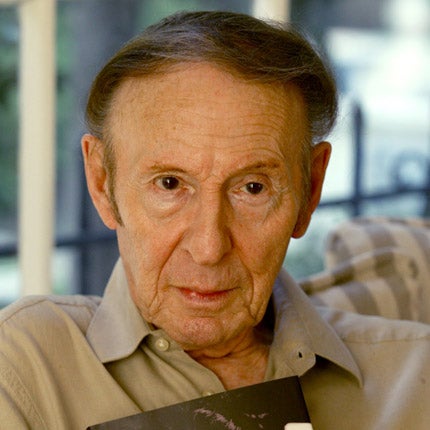Invisible Ink: No 72 - Gavin Lambert

Your support helps us to tell the story
From reproductive rights to climate change to Big Tech, The Independent is on the ground when the story is developing. Whether it's investigating the financials of Elon Musk's pro-Trump PAC or producing our latest documentary, 'The A Word', which shines a light on the American women fighting for reproductive rights, we know how important it is to parse out the facts from the messaging.
At such a critical moment in US history, we need reporters on the ground. Your donation allows us to keep sending journalists to speak to both sides of the story.
The Independent is trusted by Americans across the entire political spectrum. And unlike many other quality news outlets, we choose not to lock Americans out of our reporting and analysis with paywalls. We believe quality journalism should be available to everyone, paid for by those who can afford it.
Your support makes all the difference.After a Hollywood orgy, a young girl emerges from a swimming pool in morning light. "Is there anyone you should call?" asks the host, "anyone who'll be wondering where you are?" "No, there's no one in the world," she replies.
Welcome to the world of Gavin Lambert, a British scribe in Hollywood and a close friend of Natalie Wood and Paul Bowles. For this author of seven novels and half a dozen screen biographies, Hollywood's paradox never changed: how could so many men and women attempt to prove their individuality in a place that actively discourages individual thinking? It's an idea that raises the dramatic stakes between success and failure.
Lambert tracked his characters' aimless lives across decades in a "Hollywood Quartet" of novels. The best known, Inside Daisy Clover, was written (and filmed, with Natalie Wood) in the 1960s, and The Goodbye People appeared at the start of the 1970s, by which time the dream had truly soured and the unscrupulous behaviour of studio bosses paled into insignificance beside the waking nightmares of Manson and Nixon.
The Goodbye People is not an industry novel – its characters only brush against the film world – but their lives are affected by the dreamlike hedonism that wafts temptingly around them. The people of southern California are presented as separate tribes which only cross paths when their chieftains visit each other during festivals, and the world outside is something you see from a car. Lambert's characters are narcissistic, selfish and manipulative. They're forever changing their addresses and phone numbers, but can't decide who they're running from.
His writing is wry, spare and non-judgmental, which keeps his style modern. And he was in a position to know his world. Lambert wrote the screenplays for Sons and Lovers and The Roman Spring of Mrs Stone, and was twice nominated for Academy Awards. The Goodbye People is his dark glory, melancholic, becalmed and effortlessly resonant. Its greatest strength is its delineation of a town that disfigures all with its luxurious blankness. Only his 1959 classic The Slide Area (named after the land along Pacific Palisades that is "likely to slip away without warning") is still in print; the rest have slipped away much like his lonely, disillusioned characters. Nothing much happens in Lambert's books, but what disturbs most is the thought that his studies of lost lives are just as accurate today as they were when he wrote them.
Join our commenting forum
Join thought-provoking conversations, follow other Independent readers and see their replies
Comments